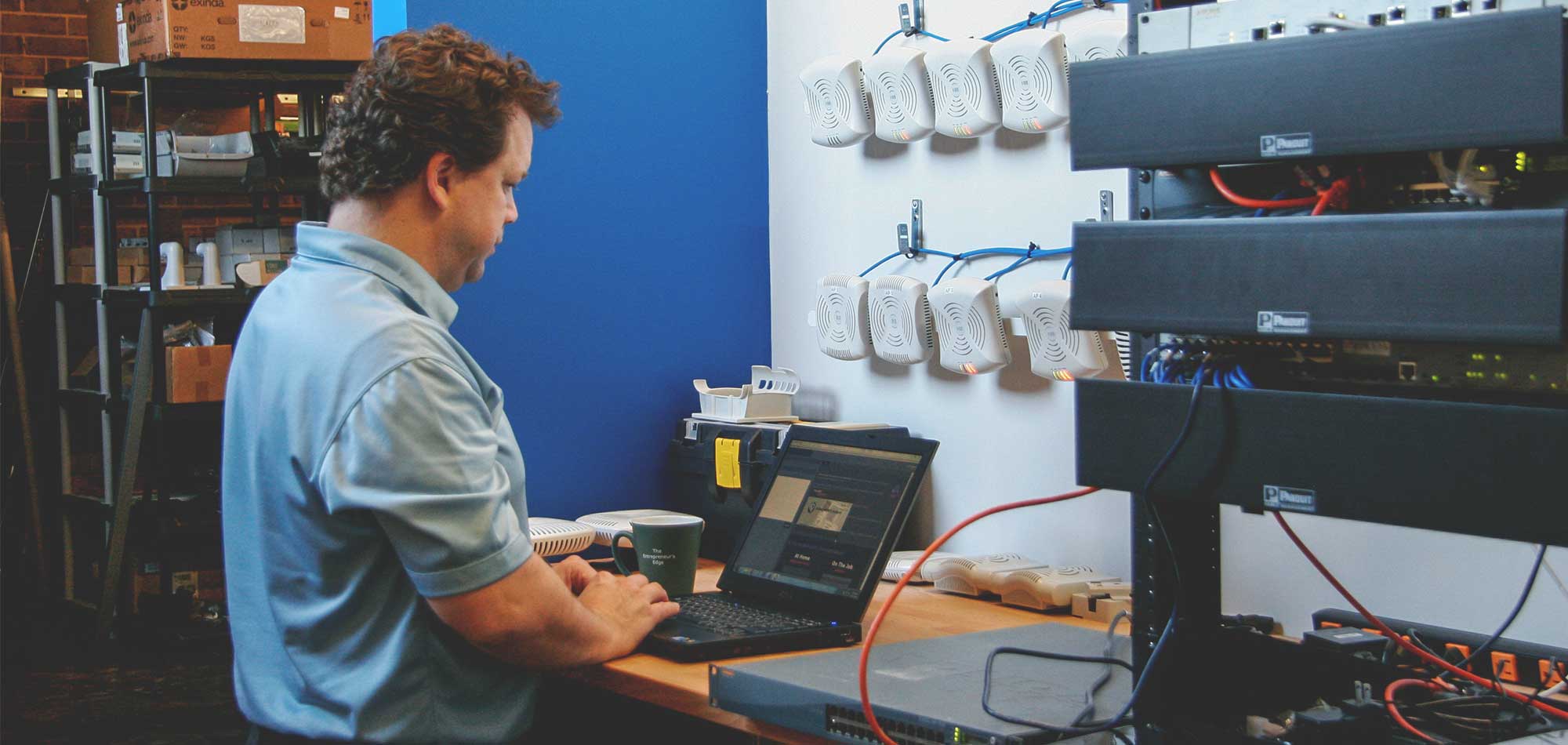
What makes dealing with WiFi problems even worse? Not knowing where to start or how to fix them. Many K-12 IT managers have experienced this exact situation, where you're struggling with slow WiFi speeds, or unreliable access and have no clue why or how to properly diagnose your wireless issues.
What can make matters even more tense and frustrating is when you just recently deployed a new WLAN. You were probably excited (maybe a bit nervous, these systems aren't cheap) and anxious to get everything up and running and then you do, just to find everything isn't working as you expected it too.
So, what can K-12 IT managers do in this situation to figure out what's going wrong and more importantly fix it?
Other than practicing proper wifi planning before you deploy, you have two choices:
- WLAN assessment
- WLAN performance assessment
Below is a breakdown of what each type of assessment is and how each will benefit your school when trying to diagnose and resolve your wifi performance problems.
WLAN Assessment
A wireless LAN assessment is what we like to call a “deep dive” into your wireless system.
This type of assessment is like “popping the hood” of your entire WLAN system and running a series of comprehensive tests, to better understand what could be causing your schools wifi problems.
In other words, it allows you to understand the overall health and operation of your network.
Having a look at the configuration of your WLAN system provides detailed insights into what ‘best’ practices and standards are being used, which aren’t, and what areas are actively causing problems on your Wi-Fi network.
Typically, a WLAN assessment will be used in conjunction with a series of other tests including wireless site surveys both active and passive.
This holistic approach will open everything and anything that impacts your wireless performance. Yes, this includes your wired infrastructure.
WLAN assessments are the most comprehensive way to diagnose any wireless issues or pain points your school might be experiencing.
Below is a great video that explains the differences between wireless site surveys and WLAN assessments and how each should be used.
WLAN Performance Assessment
A second type of assessment that can be used to understand what could be causing wifi performance problems at your school is what’s called a WLAN performance assessment, also sometimes referred to as application performance testing or a wifi performance test.
Using the actual client devices that are running on the WLAN, network engineers will measure the ‘performance’ of your network from the perspective of the end-users who would normally be accessing your WLAN.
This can be a variety of devices like smart phones, laptops, printers, scanners, etc. that are used daily on your school’s campus.
During a wifi performance test, a selection of representative devices are configured to function as test clients. An application server is configured and connected to the core of the network that will act as an endpoint to test the devices against.
Active testing is then conducted throughout the school’s environment with these test devices that each perform a battery of tests at each test location.
These tests range from measuring wireless signal, TCP & UDP download and upload, simulating voice calls, streaming video, etc.
Other types of tests that use laptops to take measurements from infrastructure components, while still valuable, tend to have a somewhat distorted perspective of the wireless system.
This is why WLAN performance assessments and their unique perspectives, can have a huge impact when it comes to diagnosing your wifi problems and fixing them.
Next Steps
Having reliable wifi performance is a mission-critical component for every K-12 school.
Whether you’re a charter school, a public school or even an entire school district, wireless has become an essential utility for everyone’s success, like having electricity.
The problem is, unlike electricity, wireless technology is changing at an incredible pace, making an already complex task that much more challenging.
Budgets are often extremely tight, and wireless is typically only a small piece of the overall puzzle (incredibly important but small nonetheless).
The difference between having reliable wireless performance and painfully slow, frustrating performance comes down to two things:
- How well you plan/prepare
- Who you choose to partner with
Working with the right partner can be the difference between running these assessments and figuring out the cause and not running these assessments and just hoping whatever they do will correct the problem.
Not every wireless network design and not every WLAN assessment is created equal. It takes a lot of experience, and a long list of certifications to have the qualifications to get it done right the first time.
Watch the video below to learn what you should ask any perspective wireless service provider before you give them the green light.
At SecurEdge, we provide a platform to simplify networking and deliver a reliable, robust, and secure wireless system-–it’s all we do. If you have any questions or would like to discuss an upcoming project, please contact us here.




![Mobile Device Use and Your School's Bandwidth Problem [New Data]](https://techgrid.com/hubfs/mobile-device-use-and-your-schools-wifi-networks-bandwidth-problem-new-data.jpg)

